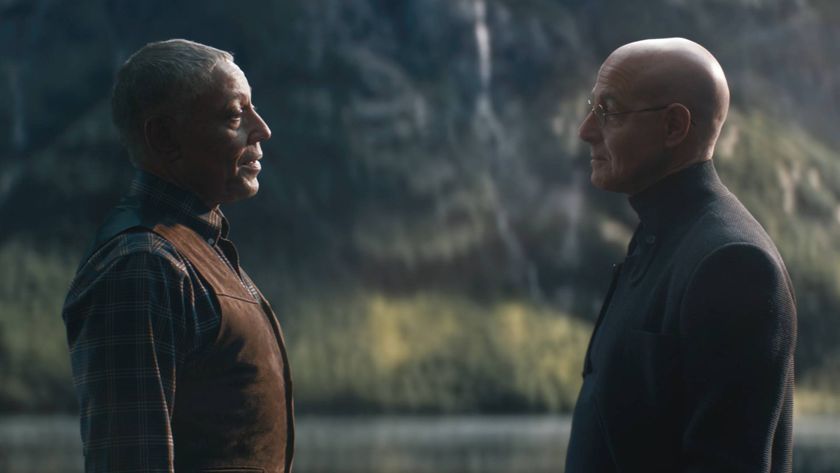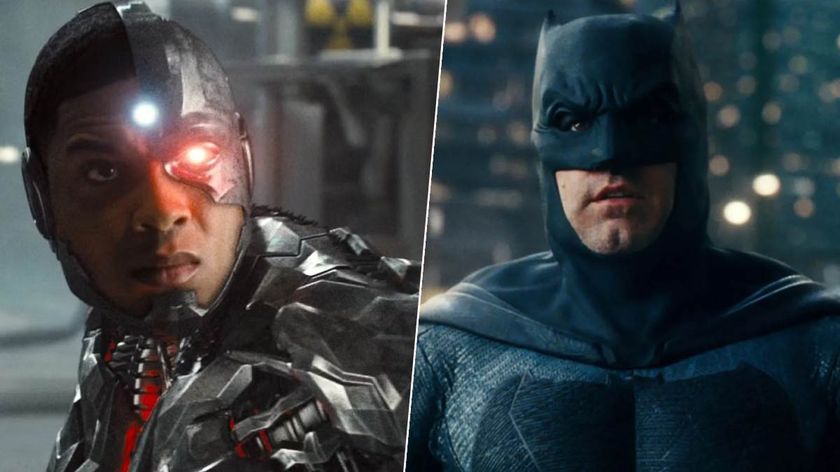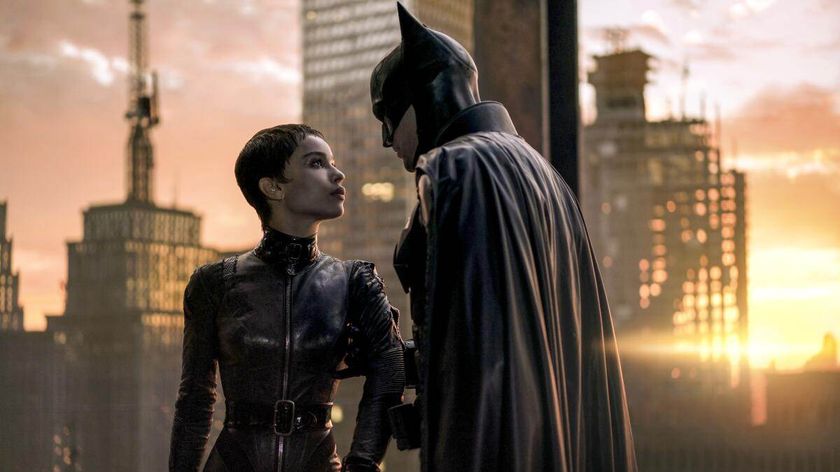The Greatest Directors Ever (Part two)
The second batch of the best people to ever step behind a camera
In today’s selection in our countdown to the best film director of all time, we take a look at the king of zombies, the hero of conspiracy theorists and the man who dared to disagree with Tarantino… and was right.
80. Satyajit Ray
Satyajit Ray scripted, cast, directed, scored and produced almost all his films – he even operated the camera and designed the posters. His debut, Pather Panchali, captured Bengali village life in lyrical detail and single-handedly put Indian cinema on the world map.
Ray’s world encompasses teasing Mozartian complexity (Days And Nights In The Forest) and gamey Dickensian satire (The Middleman), but it’s his artist’s eye and composer’s sense of rhythm that lend grace to his work.
Picture perfect: The Lonely Wife.
79. George Romero
The don of the dead got into horror (and trouble) early, irking Bronx cops when he tossed a burning mannequin off a rooftop for 8mm home-movie The Man From The Meteor.
Sign up for the Total Film Newsletter
Bringing all the latest movie news, features, and reviews to your inbox
Adulthood brought advertising work until Night Of The Living Dead merged scares and social comment (“I think horror is best when it has some sort of underpinning”). Attempts to ditch the dead were sometimes inspired (vampire flick Martin) but mostly lame (The Dark Half, Bruiser)… until Land Of The Dead brought studio cash and a return to form.
Picture perfect: Dawn Of The Dead
78. Oliver Stone
Bullish, brattish, bothersome: Oliver Stone’s always been a thorn in Hollywood’s side, a moviemaker who tackles Big Issues but is too big a beast to ever be tamed.
Channelling the ’60s, he spoke for a generation (Platoon, Born On The Fourth Of July, The Doors) until paranoia confused the politics (JFK, Nixon). Convinced of his greatness but losing his touch, he fell hard (Heaven And Earth, Alexander) then delivered World Trade Center, a Bush-friendly tearjerker that stopped believing the truth was out there. Don’t write him off yet, though…
Picture perfect: Platoon
77. William Friedkin
A raging bull turned easy rider, Friedkin bagged Oscars – and changed cinema – with double whammy The French Connection and The Exorcist. Entry into the ’70s elite of Coppola, Scorsese and Spielberg soured when Sorcerer, an expensive remake of The Wages Of Fear, went against Luke Skywalker at the box office and flopped.
“Star Wars swept all the chips off the table,” he sighed. On the ropes ever since, he’s taken what work he can get: Jade, Rules Of Engagement and the odd opera production. Don’t rule out a comeback though.
Picture perfect: The Exorcist
76. Kenji Mizoguchi
The cinematic magician oft-forgotten between the twin shadows of Kurosawa and Ozu, Mizoguchi is harder to see and more thrilling to discover. Combining aching sympathy with sliding camerawork and emotional expressionism, Mizoguchi shuns close-ups and cuts to pursue his characters and stories in sinuous, captivating takes.
In the tragic spiral of oppressed women in Diary of Oharu (1952), supernatural romance of Ugetsu Monogatri (1953) and heart-shattering parable Sansho Dayu (1954), he finds beauty in suffering.
Picture perfect: Ugetsu Monogatari
75. Milos Forman
Having lost his parents to the Nazis and his country to the Soviets, it’s no surprise Forman’s best work has involved charismatic individuals taking on draconian forces.
And while the wry humanism of his early Czech movies has been supplanted by bloated spectacle (Goya’s Ghosts, anyone?), his knack for offbeat biopics (Amadeus, Man On The Moon) points to an iconoclastic streak that ensures he’s always found just left of the mainstream. As he says himself, “who doesn’t have sympathy for the underdog?”
Picture perfect: One Flew Over The Cuckoo’s Nest
74. Tony Scott
Want unabashed brash and flash? Then you’ve come to the right Scott brother. “[Ridley’s] subject matter is aimed more towards posterity… I tend to be a little more rock ‘n’ roll,” says the man who swam raging rapids to win the directing gig on Top Gun (the first in a string of guilty-pleasure Bruck-busters).
His TV-ad-trained need for speed, jagged edits and colour filters can let style overtake story in films like Beverly Hills Cop II and Domino. But his commercial instincts were spot on when he ironed Tarantino’s True Romance script into a high-sheen crowd-charmer.
Picture perfect: The Last Boy Scout
73. Nicolas Roeg
“There are these three lovely critical expressions,” noted Nic Roeg. “Pretentious, gratuitous and profound… none of which I truly understand.” But he’s familiar with all three, having had critics apply them to his stunning decade-long run of Performance, Walkabout, Don’t Look Now, The Man Who Fell To Earth and Bad Timing.
Later films generated less heat (although Castaway created, ahem, some waves) but his cut-up approach to narrative, smart cinematography and provocative motifs combined to produce emotional punch.
Picture perfect: Don’t Look Now
72. Sergei Eisenstein
Not to be confused with the father of relativity, but no less important in cinematic terms. Eisenstein wrote the editing rulebook from scratch in the ’20s, pioneering the use of montage in “arranging images and feelings in the mind of the spectator”.
Art quickly fell into the service of propaganda; his Bolshevik trilogy (Strike, The Battleship Potemkin, Ten Days That Shook The World) retelling the Russian revolution for the masses. Falling out of favour with Stalin in the ’30s, his Ivan The Terrible trilogy went unfinished as bureaucracy and age took its toll.
Picture perfect: Revolutionary cinema
71. John Sayles
“I’ve started marginal and I’ve stayed marginal”, says writer-director John Sayles. Yet ever since his low-budget debut The Return Of the Secaucus 7 in 1980, he has proved to be one of the most prolific and diverse American independent filmmakers.
Subverting traditional genres, Sayles invests his films with a vivid sense of time and place, whether it’s the 1920s West Virginia coalfields in Matewan or an Alaskan fishing community for Limbo. By fusing personal and political, he examines how the past impacts on characters’ lives.
Picture perfect: Lone Star
70. Michael Curtiz
The Hungarian’s command of English wasn’t the best (his Charge Of The Light Brigade order for more bareback gee-gees mocked in the title of David Niven’s memoir Bring On The Empty Horses) but no-one questioned his film savvy.
The intense director mastered biography, western, drama and comedy, and made Errol Flynn swashbuckler The Adventures Of Robin Hood and Jimmy Cagney gangster flick Angels With Dirty Faces. Other Golden Age directors bowed to the needs of their studio – Curtiz remade Warner Bros’ output in his own image.
Picture perfect: Casablanca
69. Alexander Mackendrick
Mackendrick slipped his mordant Scots humour into the snug world of Ealing comedy like a razor-blade into a tea-cake. In Whisky Galore!, principled Captain Waggett is gulled by cynical islanders; Sidney Stratton, The Man In The White Suit, is hunted by a lynch-mob of bosses and workers; the crooks of The Ladykillers are driven to self-destruction by an unbending nanny.
“It’s that hidden element of the intolerable in comedy,” observes Mackendrick, “that separates it from triviality.” Alone of his stablemates, he made a post-Ealing masterpiece…
Picture perfect: Sweet Smell of Success
68. Pedro Almodóvar
The high-camp mischief-maker cobbled together Super 8 shorts in Madrid in the early ’70s, below the radar of the oppressive Franco regime. “My rebellion is to deny Franco,” he said later, once his screwball sex comedies, including Matador and Women On The Verge Of A Nervous Breakdown, had made him an arthouse darling.
He has completed the journey from irreverent imp to classy crowd-pleaser with glossy, gratifying pictures like Talk To Her and Volver.
Picture perfect: All About My Mother
67. Federico Fellini
Late Fellini, packed with dwarves, gargantuan women and circus trickery, is a byword for self-indulgence. Earlier Fellini’s neorealist roots had meshed with his personal obsessions, reining in the visual excess.
I, Vitelloni examines provincial futility, La Strada and Il Bidone mix satire with compassion, Nights Of Cabiria showcases Giulietta Masina’s deluded Roman hooker. La Dolce Vita is the tipping-point, Fellini at once fascinated and repelled by decadent spectacle.
From then on it’s downhill. “I’ve nothing to say,” admits the director’s surrogate in 81⁄2, “but I want to say it anyway.”
Picture perfect: La Dolce Vita
66. Ken Loach
“We are all equally important and drama is not the preserve of the middle class,” says Loach, who for over four decades has demonstrated an indefatigable commitment to exploring the lives of society’s have-nots.
His best films, such as Raining Stones, My Name Is Joe and Sweet Sixteen, blend humour with pathos and feature impressively naturalistic performances. Last year’s elegiac Irish civil war epic The Wind That Shakes The Barley deservedly won the Palme d’Or, but for socialist Loach the struggle continues.
Picture perfect: Kes
65. Bryan Singer
It’s no surprise to learn Singer’s favourite movie is Jaws. A film school grad born too late to join the ’70s movie brats, Singer followed Spielberg’s path, making polished blockbusters for Generation Xbox.
Labyrinthine classic The Usual Suspects paved the way, but then came a career shift into comic book adaptations (X-Men I and II, Superman Returns). No geeky fanboy, Singer turned each into something personal; his status as one of Hollywood’s few openly gay directors making him no stranger to alienation.
Picture perfect: The Usual Suspects
64. Richard Linklater
It’s ironic that Linklater made his name with a film called Slacker. The self-taught writer-director has never rested on his laurels, switching genres (western, sci-fi, baseball flick) and formats (16mm, digital, animation) with ease.
No one yelled “sell out!” when the indie stalwart went mainstream with School Of Rock, which, like Before Sunrise/Sunset and Dazed And Confused, highlights his gift for warmth sans schmaltz. He can do downbeat, too: Tape, SubUrbia and A Scanner Darkly, the last of these nailing Philip K Dick’s voice through his own.
Picture perfect: Dazed And Confused
63. John Carpenter
Handed an 8mm camera aged eight, John Carpenter found himself driven by “an unnatural obsession” to make movies. Debut featurette Revenge Of The Colossal Beasts set his stall out early; his craft, if not his taste, was improved by attending USC to be tutored by Ford, Hawks and Welles.
A pragmatic guy, Carpenter cranked out A-grade B-movies in the ’70s and early ’80s: Dark Star, Assault On Precinct 13, Halloween, The Fog, The Thing. Masterful and menacing, they negate 20 years of subsequent mediocrity.
Picture perfect: Halloween
62. Robert Bresson
“Robert Bresson is French cinema, as Dostoevsky is the Russian novel and Mozart is the German music,” said Jean-Luc Godard. Catholic humanist Bresson made just 14 films in 40 years, all astonishing dramas of grace and redemption in a cruel, cold world.
In Pickpocket’s crime drama and POW thriller A Man Escaped, he created a kind of pure cinema – non-actors, no superfluous details, seismic close-ups. And how many geniuses choose a donkey as their great witness? Poor old Balthazar (Au Hasard Balthazar) sees it all: envy, pride, brutality and… love.
Picture perfect: Pickpocket
61 Sam Raimi
Aged 19, Sam Raimi took $300,000 raised from Michigan doctors and dentists and made Within The Woods, which turned into The Evil Dead, a horror classic that had Stephen King raving and the Obscene Publications Act ranting.
After a decade of horror (Evil Dead 2, Army Of Darkness, Darkman), Sharon Stone picked him for spaghetti western The Quick And The Dead and, in 2002, Spider-Man slung him on to the A-list.
Always polite, he directs in suit and tie: “The old masters used to dress in a formal manner on set,” he notes. “I thought it was supercool.”
Picture perfect: Evil Dead 2
The Total Film team are made up of the finest minds in all of film journalism. They are: Editor Jane Crowther, Deputy Editor Matt Maytum, Reviews Ed Matthew Leyland, News Editor Jordan Farley, and Online Editor Emily Murray. Expect exclusive news, reviews, features, and more from the team behind the smarter movie magazine.













The Electric State may be the Russo brothers' most challenging VFX project yet, but stars Stanley Tucci and Giancarlo Esposito say it's one of the easiest films they’ve ever done

Stars Stanley Tucci and Giancarlo Esposito say their new dystopian sci-fi movie The Electric State is more like our own reality than we might realize




